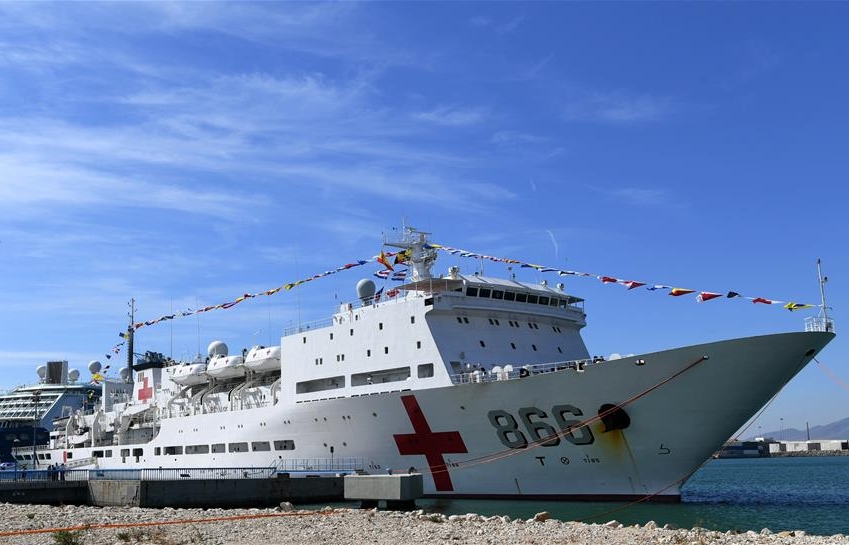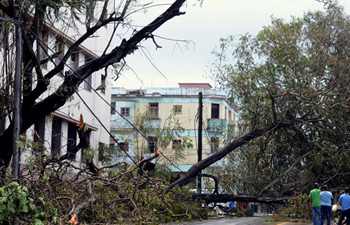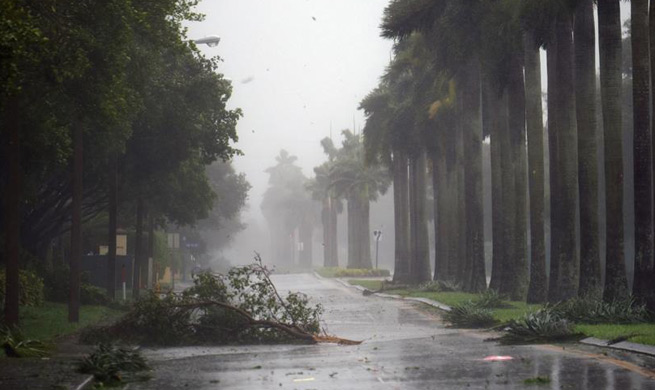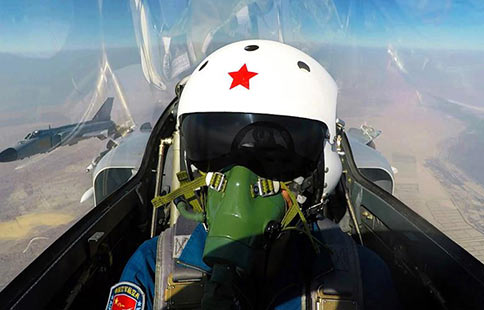TOKYO, Sept. 11 (Xinhua) -- Japan's Defense Ministry said on Monday that it had received a final report from the U.S. military concluding that pilot error was to blame for the crash of one of its Osprey aircraft in waters off Okinawa last December.
Despite the tilt-rotor planes' checkered safety history, the U.S. military said that there were no technical malfunctions involved in the aircraft itself that contributed to the crash that injured two of the five crew members aboard.
The final report compiled by the U.S. military, said that the Osprey made an emergency landing in shallow waters off Nago City during a nighttime, midair refueling training exercise.
The incident marked the first major accident involving one of the controversial Osprey planes in Japan.
"There were no indications that a mechanical malfunction or maintenance malpractice were contributing factors to this mishap," the report said.
"The MV-22 Osprey made an intentional water landing under controlled, powered flight," it also stated.
The report on the crash came at a time when safety concerns over the plane, that can take off and land like a helicopter and cruise like a regular plane, have risen of late following an Osprey making an emergency landing at a commercial airport in southwestern Japan while flying to a U.S. base in Okinawa.
Concerns were raised further in August, when an Osprey crashed off Australia, resulting in the death of three U.S. Marines.
According to local media reports, Okinawa Deputy Governor Moritake Tomikawa visited Camp Foster on Monday to hear the outcome of the report from Lt. Gen. Lawrence Nicholson, the top commander of U.S. forces in Okinawa.
The Osprey has been a particular sour point for citizens of Okinawa, which hosts the bulk of U.S. forces in Japan, due to incidents of noise and ongoing safety concerns.
Tomikawa told a press briefing after meeting with Nicholson that he had urged the U.S. commander to ensure that a convincing, quantifiable explanation was given to the people of Okinawa on the planes' safety.
The report said that during the nighttime refueling drill the Osprey's propeller hit a refueling hose being extended from an Air Force MC-130 refueling plane, due to the pilot increasing the engine output too much.
Despite throttling back the report said the pilot found it difficult "to maintain balanced flight due to high vibrations."
The plane subsequently followed the coastline of Okinawa "in order to avoid flying over people and property," and finding it hard to maintain altitude and continue to fly the plane safely, the pilot executed an emergency landing.
The aircraft broke apart as it landed in shallow waters off the coast of Nago on Okinawa's main island. Two of the five crew members were injured and all had to be airlifted to safety.
The report said the training exercise was held in rough weather with winds of between 36 and 54 km per hour.
The U.S. military has more than 20 of the MV-22 Osprey's deployed at the U.S. Marine Corps Air Station Futenma in Okinawa.
Japan's Ground Self-Defense Force is planning to acquire 17 Ospreys to be deployed at Saga airport in southwestern Japan and allocations have been made in the latest defense budget for more of the accident-prone planes.
The crash in Okinawa marked the first major accident involving an Osprey since its deployment in Japan in 2012 and has had Okinawan officials vehemently call for the planes to be permanently withdrawn from Japan.
Prior to this accident, Ospreys have been involved in multiple crashes around the world leading to numerous fatalities, dating back to the plane's developmental phase in 2000.

















